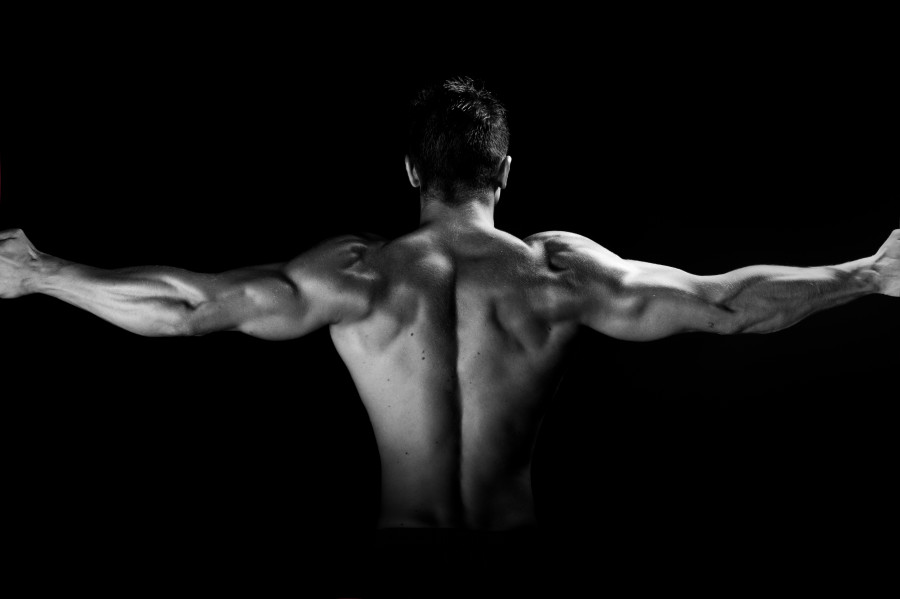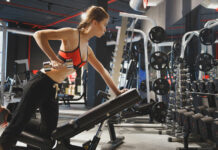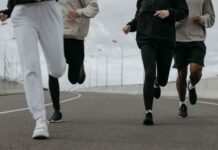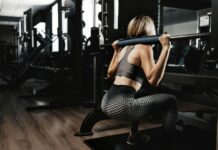The back is not only one of the largest and strongest parts of the body, but it is also one of the most complex areas due to the series of interconnected muscles that make it up. That’s why we divided the back into four main regions: upper and outer back, lower back, mid back, and lower back. Each area requires specific stimulation through different exercises, so we’ll look at the best two for each of the four.
With the “menu” that we will present below, you can customize your own training by selecting an exercise for each area, to form a complete back routine. If you notice that there is an area that is more difficult to advance, you can also include additional exercises to reinforce that area that is furthest behind. Ultimately, it’s about understanding which exercises work each area, to have the ability to build a back with the shape (usually V -back), thickness and width that you want.
The best exercises for the back
As a small note, we add that the exercises included in this guide do not isolate, but rather emphasize certain areas of the back musculature.
Area 1: Upper/outer back
Make movements in which you use a wide grip – generally, a width greater than the width of the shoulders -, with which we can develop a V-back. It is customary to do the exercises taking an angle above the head, or in perpendicular to the body. Best exercises: Pull -ups and bent-over barbell rows , both wide-grip exercises.
Wide grip pull-ups
- Grab the bar with an overhand. Fully extend your arms and relax your shoulders to stretch your lats in the bottom position.
- As you come up, keep your elbows out to the sides and use them to pull yourself up while contracting your lats.
- Try to go as high as possible to fully stimulate the lats.
- If you can’t get all the way up, consider seeking the help of a partner or an assisted machine to do pull-ups.
To add difficulty and effectiveness, squeeze your shoulder blades when you’re hanging with your arms fully extended.
Bent-over barbell row
- Don’t get on a bench or platform to increase your range of motion; you are more likely to round your lower back. If you need more range of motion, use smaller plates to get closer to the ground, rather than trying to balance on a bench.
- Using a wider than shoulder width grip will allow you to keep your elbows out to the sides and pull back as far as possible for a full contraction.
- Keep your knees bent and in a bent-over row position throughout the entire exercise. It’s easy to lose posture when lifting heavy weights, but in any case, other muscles that function as auxiliary helpers are also being added to the movement.
For a more intense exercise, try to bring the bar up to your upper abs on each lift.
Area 2: Lower back
For more emphasis on the lower latissimus area, use a close, reverse grip for chin-ups and pulldowns. One of the few movements to work the lats together is the straight arm pulldown.
Best exercises: reverse grip pulldown and straight arm pulldown.
Reverse Grip Pulldown
- With your palms facing your face, grasp the bar about the width of your shoulders. This position allows us to bring the elbows back, as far as possible, stimulating the muscles of the back to the maximum.
- Keep your torso upright, making just a slight arch in your back as your arms are fully extended at the top of the movement. The chest accompanies the back in that slight slouch, but when we bring the bar to the chest, we pull it out to put more tension on the back muscles.
- Pull your elbows as far back and down as you can until the bar approaches your upper pecs. Squeeze your shoulder blades at the point of maximum contraction.
Straight Arm Pulldown
- Grab the horizontal bar overhead, standing up, and far enough that you can keep your arms fully extended throughout the movement to the bottom (just slightly bending your elbows).
- Lower the bar with your arms straight until it touches your thighs. Focus on feeling the movement in the lats. The arms should act only as levers.
- The movement should be performed only in the shoulder joints.
For optimal stimulation of the lower lats, do not stop the movement once the bar touches your thighs, but instead re-squeeze the lats by squeezing once more towards the thighs.
Area 3: Mid back
To work this area, use close and mid-grip rowing grips, in which you pull the bar, dumbbells, or handle toward your abdomen or to the sides for better muscle building. Best exercises: One-arm dumbbell row and cable row.
One-arm dumbbell row
- Lean forward at the waist and place your right knee and right hand on a flat bench.
- Keep your left foot on the ground as you hold the dumbbell in your left arm. Let the weight hang slightly forward, arm fully extended.
- Pull the dumbbell toward your hip, keeping your elbow by your body.
- Keep your back straight and your abs tight. Bring your elbow as high as you can. At the top of the movement, squeeze your shoulder blades together, then lower the weight back the same way.
- Repeat this movement until the end of the series, and change arms.
Cable rowing
- Sit with your knees slightly bent to reduce pressure on your knees and maintain better balance.
- While you might think that leaning your body forward would give you more range of motion, keep your torso upright, as this better engages your mid-back while reducing stress on your lower back.
- Maintain a slight arch in your lower back at all times.
- Pull your shoulders and elbows back as far as you can so that the handles touch your abdomen.
To add difficulty to the exercise, hold for a second or two at the point of peak contraction, and squeeze your shoulder blades together for optimal muscle stimulation.
Area 4: Lower back
The exercises to work this area require flexion at the waist, and not the hips, since with these we would be working the glutes or hamstrings, for example. It is a critical area to strengthen and thus prevent back pain.
Best exercises: back extension and stiff-legged deadlifts.
Back extension
- Once positioned on the back extension bench, cross your arms over your chest or behind your head (increases the difficulty this way). Optionally, a weight plate can be added near the chest to increase intensity.
- Slowly bend at the waist as far as you can, rounding your back as you rise.
- Contract your lower back muscles to lift your torso back to the starting position. Do not make movements too sudden or fast, and avoid reaching too high, since hyperextending the back is not a good idea.
Adjust the bench so that the hips are perfectly molded, thus preventing them from moving and concentrating the force on the muscles of the lower back.
Stiff legged deadlift
- Unlike the Romanian deadlift, the bar is brought closer to the ground here, making the lower back work more through the wider range of motion.
- As we lean forward at the waist, the buttocks pull back and we allow the bar to hang freely with arms fully extended. The legs must be straight.
- Keep your lower back muscles engaged throughout the descent.
- Push your hips forward as you rise up. Stand up without leaning your upper body back. The bar should rest on the upper part of the thighs.
- Focus on pushing your back and hip muscles, not your arms when raising your torso.
Unlike the Romanian deadlift, it allows your lower back to round slightly when you are in the bottom position of the exercise.
Training plan
- Include in your routine an exercise that works each area of the back.
- To work muscle mass, do between 2 and 3 sets of 8-12 repetitions. For strength training, work with heavier weights and low rep sets (4-7 reps). For muscle definition and endurance, work lighter weights and do high rep sets (15-25 reps).
A workout that focuses on building upper/outer lat muscle mass, but still hits all areas of the back, would look something like the chart below, which does not include warm-up sets. Rest 1-2 minutes between each set.
| Exercise Area / Spotlight | Series | repetitions |
| Pull-ups (wide grip) / Outside lats | 3 | 12, 10, 8 |
| Bent-over row with bar / Outside lats | 3 | 8, 10, 12 |
| Cable Row / Middle Back | 3 | 8, 10, 12 |
| Reverse Grip Pulldown / Lower Lat | 3 | 12, 10, 8 |
| Back extension / Lower back |













